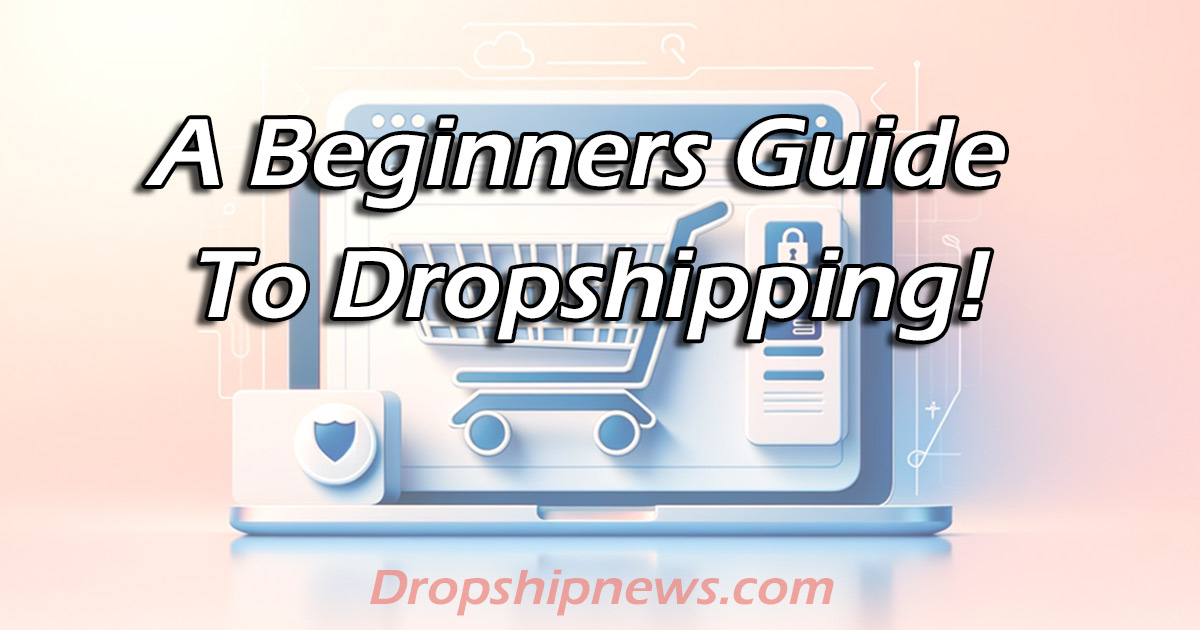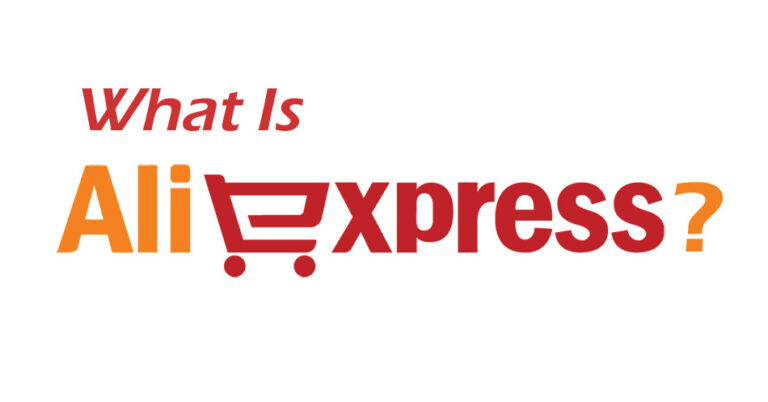The Dropshipping Business: A Step-by-Step Guide for Beginners

Introduction
Hey, fellow entrepreneurs! I’m thrilled to take you on this journey into the world of dropshipping. If you’ve ever wondered about turning your entrepreneurial dreams into reality with an online store, you’re in the right place.
Dropshipping is a fantastic way to step into the e-commerce arena, and I’m here to guide you through every step of the process.
In this guide, I’ll start by unraveling the mystery of what dropshipping really is and why it’s such a buzzword in the online business world. I’ll share my own experiences and insights to help you understand the nuts and bolts of starting a dropshipping business. We’ll discuss choosing the right niche, finding reliable suppliers, and the all-important task of setting up your online store.
But it’s not just about getting started; it’s about thriving. We’ll explore the financial aspects, including the real costs of starting and running a dropshipping business, what you can potentially earn, and how to maximize your profits.
I’ll also be candid about the challenges and how hard (or easy) it is to start a dropshipping business, sprinkling in some success stories, including my own, to keep you inspired.
By the end of this guide, you’ll have a clear roadmap of the requirements and steps to take your dropshipping business from just an idea to a profitable reality. So, grab a coffee, and let’s begin this journey together!
1. What is a Dropshipping Business?
Let’s start at the very beginning – understanding what dropshipping is all about. If you’re new to this, you might be wondering, ‘What exactly is dropshipping?’ Well, let me demystify this for you in simple terms.
Defining Dropshipping: In essence, dropshipping is a business model where you, as the store owner, sell products to your customers without actually stocking the items yourself.
Here’s how it works: You set up an online store and list products you’ve sourced from dropshipping suppliers. When a customer buys a product from your store, the order is sent directly to the supplier, who then ships the product straight to the customer. As the store owner, you never handle the product directly – the beauty of dropshipping is in its simplicity and efficiency.
Why Choose Dropshipping?: You might be thinking, “Why should I choose dropshipping over other e-commerce models?” Great question!
Dropshipping is particularly appealing for several reasons. First, it requires less capital upfront compared to traditional retail models – you don’t need to invest in inventory. This makes it an option for many budding entrepreneurs.
Secondly, it’s low-risk. Since you’re not committing to buying stock in advance, you’re not stuck with unsold inventory. Lastly, it offers flexibility and convenience. You can run your store from anywhere in the world, and you’re not tied down to managing physical products.
However, it’s not all roses and rainbows. There are challenges too, like finding reliable suppliers, competing with other dropshippers, and ensuring customer satisfaction. But don’t worry, we’ll cover all of this in the coming sections.
In a nutshell, dropshipping is a streamlined, low-risk way to start selling online. It’s perfect for those who are enthusiastic about e-commerce but not ready to make a huge financial commitment upfront.
2. How to Start a Dropshipping Business
Alright, now that we have a good grasp of what dropshipping is, let’s talk about how to get your own dropshipping business off the ground. It’s an exciting journey, and I’m here to walk you through it step by step.
Setting the Foundation: Before diving into the world of dropshipping, it’s crucial to lay a solid foundation. This means doing your homework. Start by researching the market and identifying potential niches that interest you.
Are you passionate about fashion, gadgets, or maybe eco-friendly products? Choose a niche that not only has a market demand but also resonates with you personally. This makes the business journey not just profitable but also enjoyable.
Choosing Your Niche: Picking the right niche is like finding the perfect pair of shoes – it needs to fit well and be comfortable. Your niche will determine who your target customers are, what type of products you’ll sell, and even the marketing strategies you’ll use. So, take your time with this step.
Analyze market trends, customer preferences, and potential competition. Remember, a well-chosen niche can set you apart in the crowded e-commerce space.
Finding Your Suppliers: Once you’ve settled on a niche, the next big step is finding reliable suppliers. This can be a make-or-break decision for your dropshipping business. Look for dropshipping suppliers who offer quality products, reasonable shipping times, and are open to building a partnership. Platforms like AliExpress, SaleHoo, CJ and Oberlo can be great places to start.
Building a good relationship with your suppliers is key – they’re a crucial part of your business!
Selecting the Right E-commerce Platform: Your e-commerce platform is your virtual storefront, so choosing the right one is essential. Platforms like Shopify, WooCommerce, and BigCommerce offer various features tailored to dropshipping. Consider factors like ease of use, integration options with suppliers, customization capabilities, and pricing. Your choice of platform should align with your business needs and growth plans.
Taking these first steps might feel overwhelming, but trust me, it gets easier as you go along. Plus, the excitement of building something from scratch is totally worth it. We’ll discuss each of these steps, so you’ll be fully equipped to launch your dropshipping business.”
3. Dropshipping: Where to Start?
“Embarking on a dropshipping venture can seem daunting at first, but knowing where to begin makes all the difference. Let’s break it down into manageable steps to kickstart your journey with confidence.
Market Research and Product Selection: The first critical step is conducting thorough market research. This is where you get to put on your detective hat and delve into what products are trending, what customers are buying, and what gaps you can fill in the market.
Use tools like Google Trends, social media, and product spying platforms to gather insights. Once you have a good understanding of the market, it’s time to select your products. Aim for products that are not only in demand but also align with your niche and business goals. Note: Aim for higher margin products wherever you can.
Selecting the Right E-commerce Platform: As mentioned earlier, choosing the right platform is like choosing the location for a physical store – it’s a crucial decision. You’ve got options like Shopify, the most popular dropshipping platform with great integrations, WooCommerce for those who love WordPress, or BigCommerce for more extensive enterprise solutions. Think about what you need in terms of customization, scalability, and ease of use. Also, consider the support and community around each platform, as these can be invaluable resources.
Setting Up Your Store: With your products selected and your platform chosen, it’s time to build your store. This is where you get creative – designing a website that reflects your brand and appeals to your target audience. Focus on creating an easy-to-navigate, visually appealing site. Remember, your website is often the first impression customers will have of your business, so make it count.
Many platforms have professionally designed store themes to use, think less is more and don’t waste time with too many design tweeks. You just need to get the store up and running.
Navigating Legalities: It’s crucial to get the legal side of things in order right from the start. Depending on your location, this could mean registering your business, getting a tax ID, or understanding e-commerce laws. It might not be the most exciting part of starting a business, but it’s essential for long-term success.
Starting your dropshipping business is a bit like setting off on a grand adventure. There are maps to read and preparations to make, but the journey itself is incredibly rewarding. Next, we’ll talk about the nitty-gritty of running your business, from managing costs to maximizing profits.
4. Dropshipping Business Costs
When it comes to starting any business, understanding the costs involved is crucial. Dropshipping is often touted for its low entry barrier in terms of investment, but let’s get real about what you can expect to spend.
Breaking Down the Costs: The beauty of dropshipping is that you can start with a relatively small budget. But that doesn’t mean it’s cost-free. Here’s what you’ll need to consider:
- E-commerce Platform Fees: Depending on the platform you choose (like Shopify, WooCommerce, etc.), there will be monthly or annual fees.
- Domain Name and Email Hosting: Your online store needs a catchy domain name and reliable email hosting, which come at a cost.
- Marketing and Advertising: This is where a chunk of your budget will go. Whether it’s social media ads, search engine marketing, or email campaigns, getting the word out about your store isn’t free.
- Website Design and Tools: While many platforms offer free themes, you might want to invest in a paid theme or additional plugins to enhance your store’s functionality.
- Miscellaneous Costs: These can include everything from business registration fees to any additional software tools you might need.
Budgeting Tips: When I started, I was on a tight budget, so I had to be smart about where I invested my money. Here are some tips that worked for me:
- Start Small: You don’t need to have a huge marketing budget right away. Begin with a modest budget and increase it as your store gains traction.
- Focus on Organic Growth: Utilize free channels like social media, content marketing, and SEO to attract customers without breaking the bank.
- Keep an Eye on ROI: Always monitor the return on your investments, especially with paid ads. It’s easy to overspend if you’re not careful.
Understanding and managing your expenses from the get-go is vital for the sustainability of your dropshipping business. It’s all about finding the right balance between spending enough to grow your business and not overstretching your budget. The table below gives an overview of the dropshipping business costs
| Dropshipping Business Startup Item | Cost |
|---|---|
| E-commerce Platform Fees | $29 – $100 Monthly |
| Domain Name | $6 – $25 Annually |
| Marketing and Advertising | $5 – $100 Daily |
| Website Design and Tools | Up to $500 One off fee |
| Business Registration Fees | $50 – $200 One off fee |
| Additional Software/Tools | $0 – $150 Monthly |
| Total |
In the next section, we’ll talk about how to set up your online store – the fun part where you bring your vision to life!
5. Setting Up Your Online Store
Building your online store is where your dropshipping business comes to life. It’s an exciting process, but it’s also where you need to pay attention to detail. Let’s go through the key steps to create a store that not only looks good but also converts visitors into customers.
Choosing a Theme and Layout: Your store’s appearance is the first thing customers will notice, so it’s important to make a good impression. Choose a theme that aligns with your brand and is appealing to your target audience. Most e-commerce platforms offer a variety of free and paid themes. Remember, the layout should be clean, easy to navigate, and mobile-friendly. Don’t waste time on tweaks, bells and whistles!
Product Listings and Descriptions: Your products are the stars of the show. Upload high-quality images and write detailed, persuasive product descriptions. Include key features, benefits, and any other information that will help the customer make a decision. Good product listings can significantly boost your sales. This is where you should spend some quality time and don’t skimp here!
Setting Up Payment and Shipping: Decide on the payment gateways you’ll use (like Shop Pay, PayPal, Stripe, etc.) and set them up on your platform. For shipping, since your suppliers will handle it, ensure their shipping options and times are clearly communicated to your customers.
Implementing SEO Best Practices: SEO is crucial for driving organic traffic to your store. Use relevant keywords in your product descriptions, meta descriptions, and blog content (if you have one). Also, ensure your site has a fast loading speed and is optimized for mobile users.
Testing and Launching: Before going live, test your store thoroughly. Check the functionality of navigation, cart, checkout process, and links. Ensure that the payment process is smooth and secure. Once everything is in place and tested, it’s time to launch your store to the world! The last thing you need is to spend on advertising only to find nobody can check out, so test, test, test!
Setting up your online store is a mix of creativity and technicality. It might seem overwhelming at first, but with the right tools and a bit of patience, you can create a store that you’re proud of and that customers love to visit.
6. How Hard is it to Start a Dropshipping Business?
Many aspiring entrepreneurs wonder about the difficulty of starting a dropshipping business. Let me share my experience and give you a realistic perspective. How ever easy it maybe, dropshipping is not suited to everyone and you may decide it’s not for you.
Challenges Faced: Starting a dropshipping business isn’t without its challenges. Finding reliable suppliers, competing with thousands of other dropshippers, and building a customer base are some of the hurdles you’ll likely face. It requires patience, research, and a willingness to learn and adapt.
For me, understanding the nuances of digital marketing and customer service were initially challenging, but incredibly rewarding once mastered. Also I found that a work ethic of consistency is also essential.
Skills and Resources Needed: So, what does it really take to start and run a successful dropshipping business? Here’s what I’ve found to be essential:
- Research Skills: Being able to effectively research products, markets, and competition is crucial.
- Marketing Knowledge: Understanding the basics of digital marketing, including SEO, social media, and email marketing, is key to attracting and retaining customers.
- Technical Know-How: Familiarity with your chosen e-commerce platform and basic website management is important.
- Customer Service Skills: Providing excellent customer service can set your store apart from competitors.
- Resilience and Adaptability: The e-commerce world is dynamic, so being able to adapt to changes and bounce back from setbacks is vital.
- Hard Work and Consistency: It’s not a free lunch and it’s going to take a lot of hard work and consistency to stay the course and succeed.
Starting a dropshipping business is definitely not a “get rich quick” scheme. It requires hard work, dedication, and a continuous learning mindset. But the beauty of it? You can start with just a small amount of capitol and anyone with the right approach and mindset can do it. The barriers to entry are low, but the potential for growth and success is substantial.
Next, we’ll explore the success rate of dropshipping businesses and what it takes to be successful in this space.”
7. How Successful is Dropshipping?
Dropshipping has gained a lot of attention because it’s easy to get started and the potential for success. But just how successful is dropshipping as a business model? Let’s take a look.
Measuring Success in Dropshipping: Success in dropshipping, like any business, varies. Some store owners make a few sales a month, while others rake in significant profits. Key factors include niche selection, marketing strategy, and operational efficiency. Remember, success doesn’t happen overnight. It’s a result of strategic planning, consistent effort, and learning from mistakes.
The first measure of success is to make more profit than it costs to run the business. Many people run their dropshipping business as a side hustle and are happy to make a few extra $$ each month. On the flip side there are others who have achieved 6 figure incomes and some even more.
As I mentioned earlier, it’s not for everyone and in my experience 50% will make no profit, 40% will make a little money and around 5% – 10% of dropshipping business are truly successful enough for their owners to quit their day jobs.
Success Stories and Lessons Learned: Throughout my dropshipping journey, I’ve come across numerous success stories that are both inspiring and instructive. These stories often share common themes: a well-researched niche, innovative marketing strategies, and exceptional customer service. For me, focusing on a niche that I was passionate about and leveraging search engine marketing were game-changers.
Key Factors for Success:
- Choosing the Right Niche: A niche with high demand and low competition is ideal.
- Effective Marketing: Utilizing a mix of SEO, social media, and paid advertising to reach and engage your target audience.
- Supplier Relationships: Building strong, reliable relationships with suppliers ensures product quality and efficient fulfillment.
- Customer Experience: Offering a seamless shopping experience and excellent customer service can lead to repeat business and referrals.
The success rate in dropshipping is as varied as the entrepreneurs in the field. While it’s not a guaranteed path to riches, with the right approach, it can be a profitable and rewarding venture.
10. Dropshipping Highest Profit
In the world of dropshipping, aiming for high-profit products can significantly impact your business success. Let me share how I identified such products and maximized my profits.
Finding High-Profit Products: Identifying products that yield high profits requires a blend of market research and trend analysis. Here’s how I approached it:
- Niche Specificity: Focusing on specific niches often leads to higher profit margins. For me, choosing a niche with passionate customers meant they were willing to pay a bit more for specialized or customized products.
- Small Packaging: Choosing products that are small and low cost to ship will help you to sell mre by offering free shipping on all orders. Shipping costs and times can be deal breakers.
- Competitor Analysis: Understanding what products competitors are selling and at what price points helped me identify gaps in the market.
Maximizing Profits: Once you have your high-profit products, it’s about maximizing your margins.
- Pricing Strategy: Setting the right price is crucial. It should cover your costs and desired profit margin, while still being attractive to customers. If you have high demand then raise your prices!
- Supplier Negotiation: I worked on building strong relationships with suppliers to negotiate better prices, which in turn increased my profit margins.
- Optimizing Shipping Costs: Finding suppliers with reasonable shipping costs or negotiating better shipping rates also played a big role in maximizing profits.
Remember, high-profit products can vary depending on your niche and target market. It requires continuous research and adaptability to changing market dynamics. But when you get it right, it can significantly boost your dropshipping business’s profitability.
11. Dropshipping Salary
One of the most common questions I get asked is about the potential earnings from a dropshipping business. Let’s talk about what you can realistically expect and how I navigated my income journey.
Potential Earnings: The earning potential in dropshipping varies widely. It depends on factors like your niche, product selection, marketing effectiveness, and operational efficiency. Some dropshippers make a few hundred dollars a month, while others make thousands. It’s important to set realistic expectations and understand that substantial earnings often require time, effort, and consistent optimization of your business strategies.
My Income Journey: When I started, my initial earnings were extremely modest. It took time to find the right products and market them effectively. Gradually, as I refined my strategies and built a customer base, my earnings grew. Here’s a glimpse of my journey:
- The Early Days: Focused on breaking even and understanding the market.
- Growth Phase: As I got a better grasp of what worked, I started seeing a steady increase in profits and increase in ad spend
- Scaling Up: Investing back into the business, enhancing marketing efforts and expanding the product range, helped increase my earnings further.
One key thing I learned is that dropshipping isn’t a ‘get rich quick’ scheme. It requires dedication and a willingness to learn and adapt. With the right approach, it can be a sustainable and rewarding source of income.
Next up, we’ll explore the essential legal and operational requirements for running a dropshipping business
12. Dropshipping Requirements
Running a dropshipping business isn’t just about selling products online; it’s also about ensuring you’re compliant with legal and operational standards. Here’s what I learned about the essential requirements for running a successful dropshipping business.
Legal Essentials: It’s imperative to get the legalities right to protect your business and build trust with your customers. This includes:
- Business Registration: Depending on your location, you may need to register your business with the relevant authorities.
- Tax Obligations: Understanding and fulfilling your tax obligations, including sales tax, is crucial.
- Data Privacy and Consumer Laws: Adhering to data protection laws and consumer rights regulations is non-negotiable.
Operational Necessities:
- Supplier Agreements: Having clear agreements with your suppliers about pricing, shipping times, and return policies is important.
- Quality Control: Even though you don’t handle the inventory, ensuring product quality is essential for customer satisfaction.
- Customer Service: Providing excellent customer service, including handling inquiries and resolving issues, can set your business apart.
Staying Compliant and Efficient: Keeping up with regulations and ensuring your operations are smooth is an ongoing process. It’s important to review policies and stay updated on any changes in laws and e-commerce trends. Remember, a well-run business is more likely to be a successful business.
My Final Reflections
As we end this guide, I hope you feel more equipped and inspired to start your own dropshipping journey. Reflecting on my path, I’ve realized that dropshipping is more than just a business model – it’s a journey of learning, growth, and self-discovery.
Taking the Leap: If you’re on the fence about starting a dropshipping business, my advice is to take the leap. Yes, it involves hard work and there will be challenges, but the potential rewards are significant. Not just in terms of earnings, but also the skills you’ll develop and the satisfaction of building something of your own.
Continuous Learning and Adaptation: The world of e-commerce is ever-evolving, and staying adaptable is key. Keep learning, keep experimenting, and stay open to new ideas and strategies.
Building a Community: Finally, remember that you’re not alone in this journey. There are countless resources and communities of dropshippers out there. Engaging with these communities can provide invaluable support, insights, and inspiration.
Thank you for joining me on this exploration of dropshipping. I’m excited for the journey that lies ahead for you. Here’s to your success in the dynamic world of dropshipping e-commerce!






